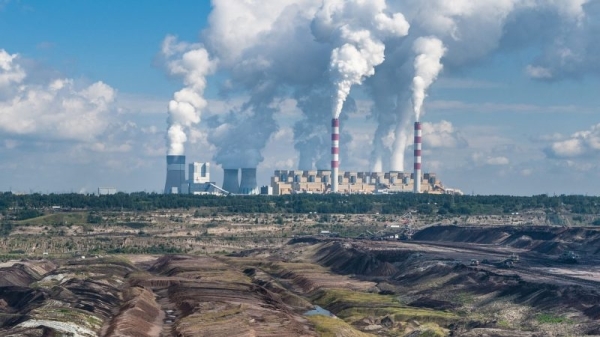Departing from coal: Poland’s new energy roadmap

The election of a new government in Poland has enabled the country to tackle its coal-dependent energy system and bring the country in line with EU climate change targets.
After 8 years in power, the far-right Law and Justice Party (PIS) lost in 2023 to the centre-right opposition. The new government, hoping to put the country on a green track, faces a major challenge.
“We have a very difficult canvas, a very difficult set of circumstances because we have barely scraped through the 2020 targets, including renewables target,” said Polish Secretary for State for Climate and Environment Krzysztof Bolesta, speaking at a Brussels conference on 4 February.
Coal makes up 70% of the electricity produced in Poland, and almost half of the country’s households rely on it for heating. Coal mining remains an important economic factor in rural areas.
Though the official date for the complete phasing-out of coal is 2049, the introduction of renewable energy sources remains subject to administrative barriers.
As a result, despite accounting for just 8% of the bloc’s population, the country emits 12% of the EU’s CO2. “We need to act everywhere” explains Bolesta.
Priorities of the new government and getting rid of coal
Poland’s air has been poisoned by what is considered a ‘dirty’ fossil fuel. Krzysztof Bolesta said, “This is priority number one to change because you cannot live in a country that basically kills you.”
The “Clean Air” program aims to eliminate smog episodes in Poland. It has a budget of €25 billion by 2030, with some of that money coming from the EU. It will introduce stricter standards but also invest more in renewables, energy storage, and electrification of public transport at a local level.
Another political priority for the new government is to present an action plan for the electrification of the country, with a target of 35% by 2030.
In most economic sectors, electrification is considered “best in class” due to its positive impacts on air quality. But the power demand will increase, which is currently met by coal power stations.
“Poland is in a difficult situation because we need to phase out coal while avoiding overinvestment in gas,” says the president of the think-tank Forum Energii, Joanna Maćkowiak-Pandera.
Solutions for the transition
Under Poland’s new energy and climate plan for 2030, the target is to achieve at least a 50% share of renewable energy in electricity production and 30% in final energy consumption.
However, in the general election, Prime Minister Donald Tusk promised to achieve a 68% share of renewable electricity by 2030.
“It has to be a portfolio of solutions”, says Bolesta, adding that the enormity of getting Poland to climate neutrality doesn’t allow for an immediate focus on power. In Warsaw, that means nuclear energy.
Construction for Poland’s first nuclear power plant is expected to start in 2026, coming online by 2033. It would be located near Choczewo on the Baltic Sea.
The government is also betting on wind power, a technology previously restricted by past governments that banned the building of turbines due to being too close to residential areas. After some EU pressure, the ban was eased.
The wind industry hopes the new Warsaw government will cut the minimum distance requirement further, doubling the area available for onshore wind farms.
Bolesta also announced that Poland is investing in carbon removal technologies and biomethane, due to its significant potential through its large agricultural industry.
Read more with Euractiv




